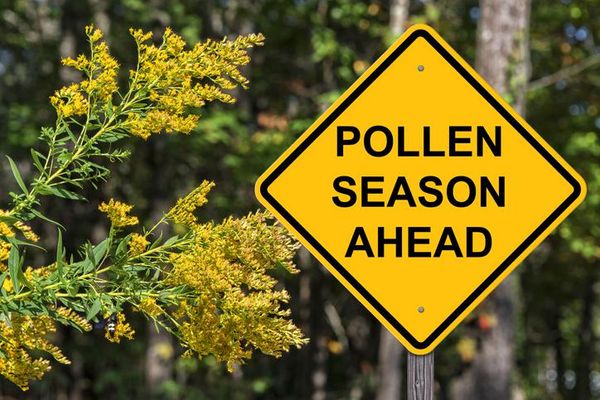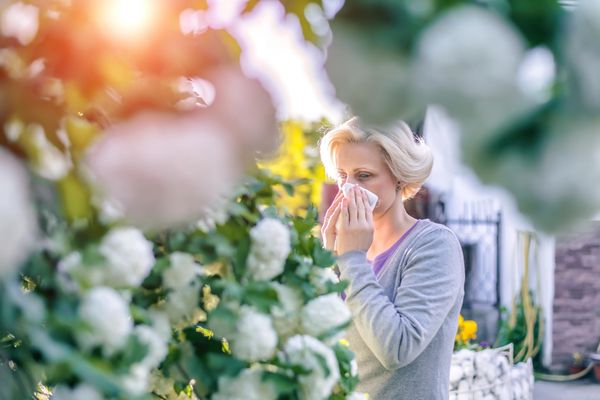Perhaps you feel bloated after a trip to the ice cream store. Or you get anxious after having a few sips of coffee. You're likely not allergic to dairy or caffeine. Rather, you may have a food intolerance.
A food intolerance is an abnormal response to a food, but it differs from an allergic reaction. Unlike a food allergy that involves the body's immune system, a food intolerance is an inability to digest the food.
Read more about The Best Way to Diagnose a Food Allergy.
Food intolerances can be tough to diagnose. When you have a food intolerance, symptoms typically happen within a few hours of eating the food. However, symptoms may be delayed, making it hard to pinpoint the offending food. You may even be able to eat small amounts of the foods you can't tolerate. And if you frequently eat foods you're intolerant to, it can be hard to link symptoms to a specific food.
Fortunately, food intolerances aren't life threatening like some food allergies. They can be problematic though.
Symptoms
Symptoms vary for food intolerances. Often, they involve the skin, respiratory and digestive systems and may include:
- bloating
- headaches
- rashes
- nausea
- fatigue
- diarrhea
- reflux
- runny nose
- abdominal pain
Food intolerances
Some common examples of foods that have been reported to cause symptoms of intolerance include:
- Aspartame. It's an artificial sweetener commonly used as a sugar substitute.
- MSG. Monosodium glutamate is found naturally in some foods, such as mushrooms, ripe tomatoes, broccoli, peas and walnuts, and also is used as a flavor-enhancing additive in some processed or prepared foods.
- Dairy. Lactose is the sugar found in dairy products like milk. It's broken down by lactase, which is needed for lactose to be digested and absorbed properly. When you're lactose intolerant, you have a shortage of lactase. You may have bloating, gas, nausea, diarrhea and abdominal pain. Learn more about signs of lactose intolerance.
- Food colorings. Some food colorings like yellow 5 and red 40 can cause hives, stuffy nose and skin swelling.
- Gluten. It's found in rye, wheat and barley. When you have celiac disease and you're exposed to gluten, your immune system attacks the small intestine. Some people who do not have celiac disease may experience milder symptoms of discomfort after eating foods containing gluten. Read more about whether you really need to go gluten-free and get tips on going gluten-free.
- Eggs. Some people have trouble digesting egg whites and experience abdominal pain and diarrhea.
- Yeast. People with an intolerance to yeast have less severe symptoms than those with a yeast allergy. Learn more about how to eat if you are allergic or intolerant to yeast.
- Alcohol. A reaction occurs when your body doesn't have the enzymes needed to break down the toxins in alcohol. It's most common in people of Asian descent who may have an inherited genetic trait. Most commonly, the problems are caused by beer or wine and may be triggered by sulfites, histamines (from fermenting or brewing), chemicals or grains.
- Caffeine. No explanation needed here! Some people are more sensitive to this stimulant, experiencing jitter, insomnia, restlessness, nervousness and anxiety.
Diagnosis
To figure out what's going on, create a food diary or log. Write down everything you eat and when symptoms happen. Check ingredients on any packaged foods you consume to help you figure out which ingredient may be causing your reaction. When you're eating out, ask what oil food is cooked in.
Then, you may want to try an elimination diet. Here, you stop eating foods most commonly associated with intolerances or foods that you think may be causing problems. Don't eat these foods for about two weeks to allow your body to reset itself. To maximize your results, don't drink alcohol or smoke to give you a clear reading on what's affecting your stomach.
After two weeks, reintroduce the eliminated foods into your diet, one at a time. If your symptoms don't return after two or three days, add the next food back in. If you have a reaction to a food, take it out. Wait a few days and add another food back in. This process helps identify what's causing symptoms.
When you're eliminating and reintroducing foods, write down what you ate, how much and where you bought it. Record how you feel after you eat; maybe you have more or less energy than before.
Even if you're sensitive to a food, you don't have to say goodbye to it forever. You may just need to wait a few months. Then, eat it less regularly or eat smaller amounts once you start eating it again.
You may also need to switch things up. Instead of cutting out all gluten, for example, try a grain other than wheat. That may make a difference.
Be careful when removing entire food groups because you can affect your nutrition. For example, don't get rid of dairy completely if you think you're lactose intolerant. You want to be sure you eat foods to compensate for the calcium and vitamin D you're missing.
Your health care professional or a registered dietitian can help figure out if you have a food allergy or intolerance.
- Worst Foods for Your Stomach - HealthyWomen ›
- 10 Tips for Dining Out With Food Allergies - HealthyWomen ›
- Allergies - HealthyWomen ›
- 10 Signs You Have a Leaky Gut—and How to Heal It - HealthyWomen ›
- Signs You're Lactose Intolerant - HealthyWomen ›
- For Years, I Lived in Agony with Undiagnosed Celiac Disease - HealthyWomen ›
- What Is a Gluten-Free Diet? - HealthyWomen ›
- Learn About Probiotics - HealthyWomen ›
- Is Sourdough Bread Healthy? - HealthyWomen ›







